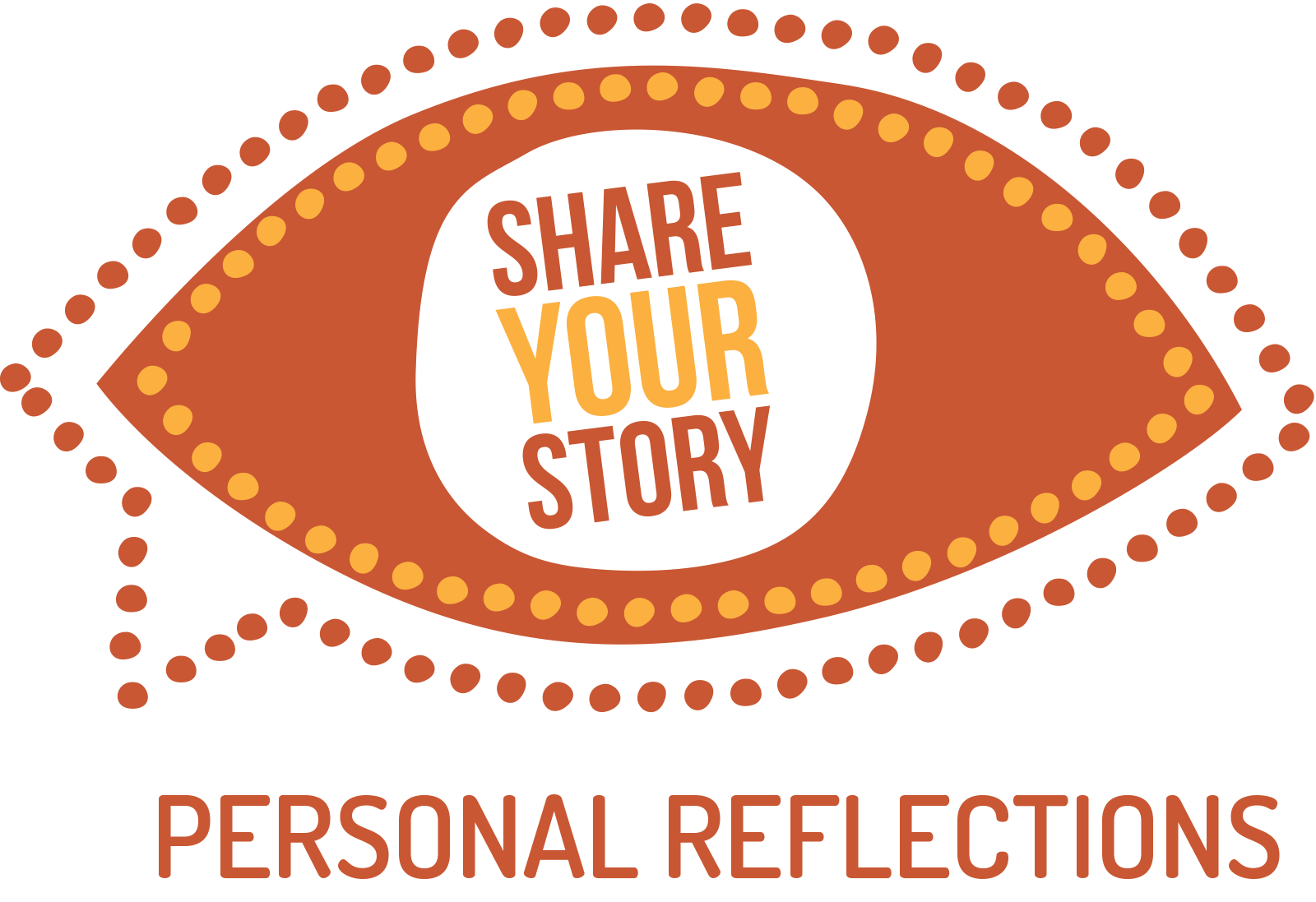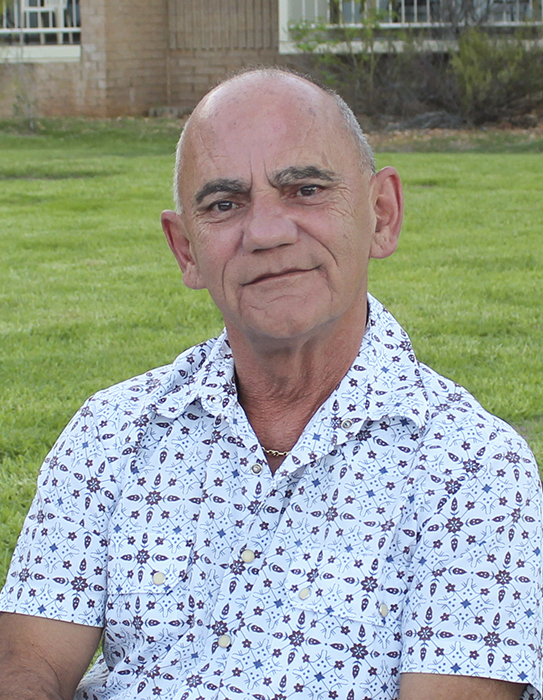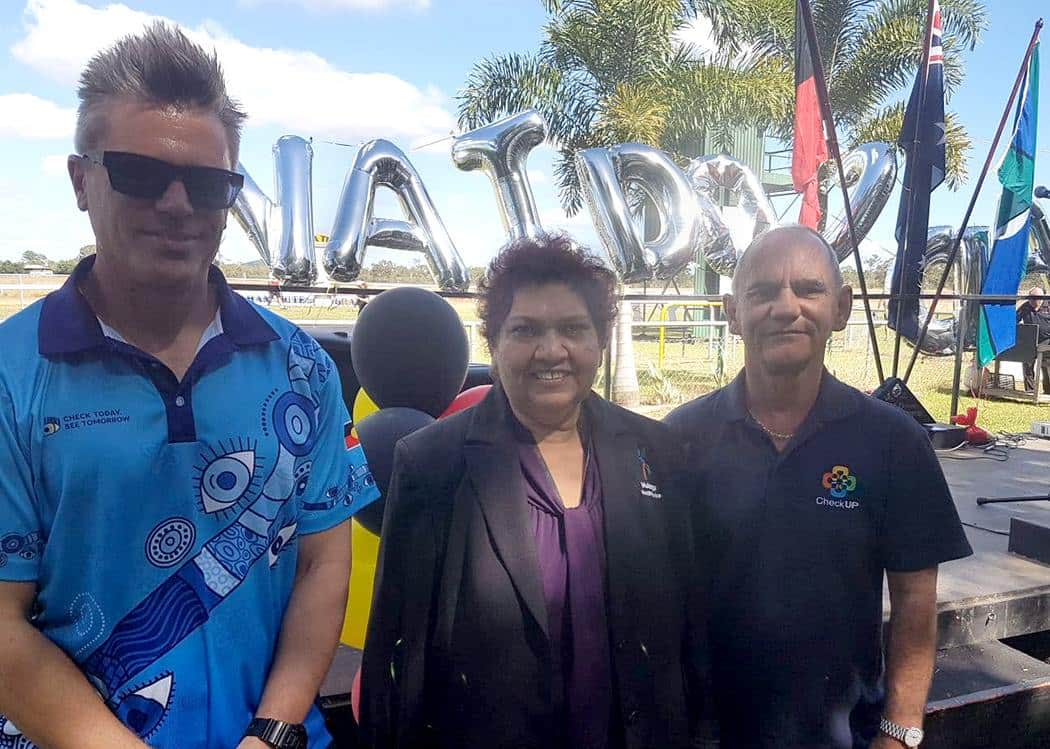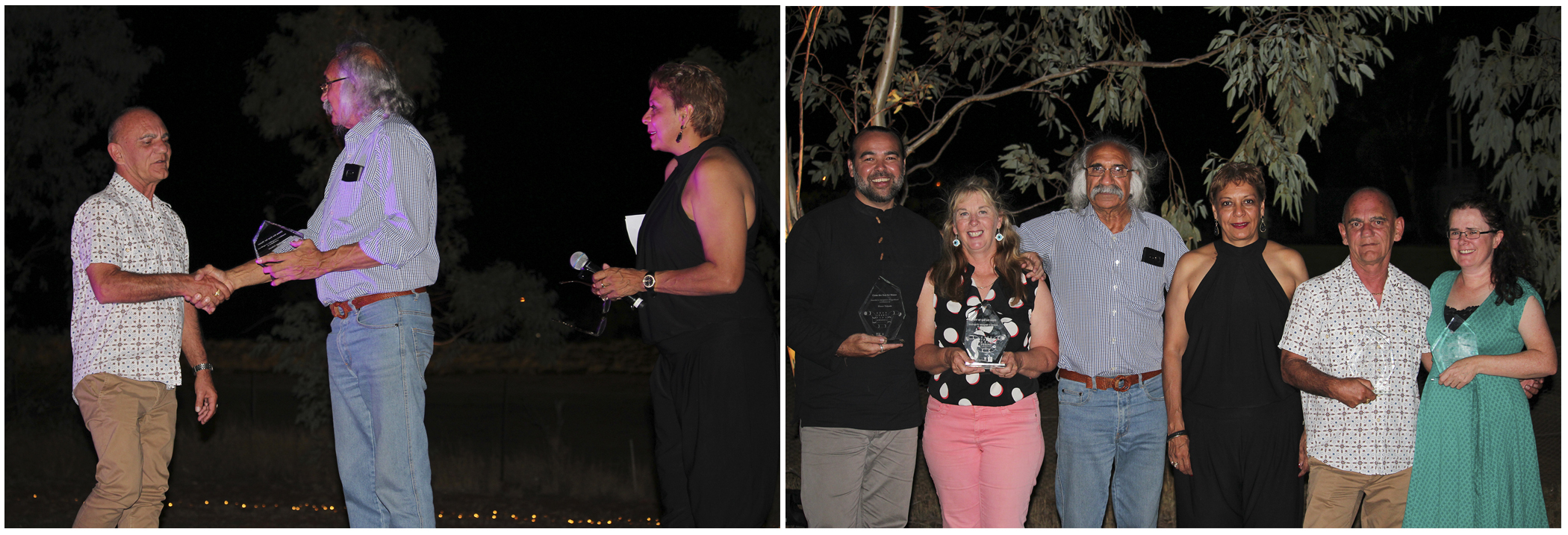Tony Coburn is an Aboriginal man from Brisbane and the Statewide Indigenous Eye Health Coordinator with CheckUP. In the latest instalment of ‘Share Your Story: Personal Reflections’, Tony reflects on his extensive career in Indigenous health and shares some of the challenges and successes from his current role.

Tony Coburn was interviewed by IEH staff member Nick Schubert for this instalment of 'Share Your Story: Personal Reflections'.

G’day Tony. Thanks for taking the time to have a chat with me. My first question is – where did you grow up? Can you tell me a little bit about your background?
I was born in Brisbane and grew up in Salisbury. I have spent 99% of my life in Brisbane. I lived in Melbourne for a couple of years. My mother was Aboriginal, and my father Anglo Saxon. My mum was Gubbi Gubbi Butchella. The Fraser Coast. That is my mob.
What has the link to your culture been like for you? How important has that been through your life?
When I was growing up, I had a big representation of Indigenous culture with my great grandmother and other Aboriginal family members. But then my parents divorced, and my mother moved to Perth. I lost contact with the Aboriginal side of my extended family, the culture was removed, and I grew up with the non-Indigenous culture.
Can you talk to us about the link between your professional journey and the reconnection with your culture?
At first, I did nursing and I went off and worked in operating theatres, before nursing profoundly and intellectually disabled children for about 2 years. I then went to Queensland Aids Council and ran their two medical centres for 15 years. I wanted to reconnect back to my Aboriginal cultural heritage, so I became one of the Indigenous HIV / STI coordinator’s for Queensland through the 2 Spirits program within the Queensland Aids Council (QuAC) for 10 years. I was then approached by the Queensland Aboriginal and Islander Health Council (QAIHC), the State's peak Indigenous health body to be the Indigenous Drug and Alcohol Coordinator for Queensland, which was the program we delivered in partnership with the West Australian Drug and Alcohol Office.
You’ve worked in a lot of roles, but I guess they've all had a similar connection around health and wellbeing.
Yep! There was one year where I gave up health and went to property management and real estate and couldn't stand that. So, I went back to health.
That's quite a shift!
Yeah it was. I just got to that stage in my life where I needed a change. But the change wasn't what I thought it was going to be. So, I went back to health, to the profession I knew and I love.
I love doing what I'm doing, working with Indigenous communities and getting better health outcomes for people
How and when did you first get involved in eye health?
I got involved in eye health probably three years ago. I was working for QAIHC as one of the CheckUP Regional Coordinators but sitting under QAIHC as the peak body. But QAIHC decided they didn't want to have that eye coordinator position anymore. So they gave it back to CheckUP. And that's when I got moved into eyes, I had never done anything with eyes previously.
And what's the official title of your role?
I'm the Statewide Indigenous Eye Health Coordinator.
So, you'd never worked with eyes before and three years ago, you moved across into CheckUP as the statewide Indigenous eye health coordinator.
Yes. And that's why I fumbled my way through. I had to do a lot of research and ask a lot of questions.

Image: Nick Schubert (IEH) and Gail Wasson (Mulungu Aboriginal Corporation Medical Service) with Tony, NAIDOC day in 2018 in Mareeba.
You've done way better than that Tony! OK, so you've had three years of experience. What do you think works well for community in terms of getting the message out there around eye health? And a second part to that is what works well for services, for getting the correct and appropriate treatment out to the community?
A lot of it's around coordination. For the service providers going in. Having people on the ground, whether health workers or receptionists in the different facilities, putting up the flyers with the optometrist visiting. Then getting out into communities and saying the optometrist is coming because in some of our locations, the optometrist only comes twice a year or three times a year. So, it's getting the word out, through pamphlets, through word of mouth. In the Torres Strait, we've suggested using the local radio to get the word out when the actual optometrist is going to be on the Island.
Have you seen a shift in in community understanding around the importance of eye health at all over the years of your experience?
A slight increase. There needs to be a lot more community education done about it. When providers go to community, they need to try to work the visit around when the other linked services like the dietician and podiatrist are going to be there. Or at least be there for the same week. Because a lot of community members don't want to be travelling backwards and forwards. So, they need to do it as a hub and spoke sort of thing, where they see the dietician and then in the next room they go to the optometrist and the next room they see the podiatrist. If we could get it working that way, it would be really good. But a lot of the facilities don't have the capacity or the space to do that. Or even the equipment necessary. You could be using up three rooms in some of the smaller Aboriginal Medical Services (AMSs) or Primary Health Centres (PHCs), and there's still the general practitioners who need room for their work and then the nurse needs a room. So, there's a space issue with a lot of it.
So that can be a bit of a catch 22.
Yeah. But the coordination is key for when an optometrist is there for four or five days in one community, like we have in the north west. It's really imperative that the coordinator is working alongside the optometrist to do the support work; organising glasses for example, with the Medical Aid Subsidy Scheme (MASS) or the Indigenous Spectacle Supply Scheme (ISSS) glasses. So, the optometrist can keep the patients flowing through.
What's the ISSS? Is that a component of the MASS glasses?
It is. The Indigenous Spectacle Supply Scheme has been rolled out through Vision 2020 Australia. So that Indigenous people don't miss out on free glasses. If they haven't got a Medicare card or if they're working, they can stay still get free glasses.
So just going back to what you were talking about before, one of the things that you've done really well over your time is you worked at regional levels and you have got a lot of collaboration happening between services. Can you tell us a little bit about how you've gone about that and what you think the benefit of that has been?
The people looking after eyes need to get out and talk to community members face-to-face, but also talk to the people in the facility and have roundtable meetings with all the providers like we've done in Queensland. Doing the mapping, getting everyone in the room and sharing information because a lot of them do not know what the other services are coming to the community. They're working in silos. And you've got to break that down, so they're referring to each other and supporting each other.
And have you got a particular good example of what's happened as a result of that work?
If you look at the Palm Island coordinator position, it's working brilliantly. There's an eye coordinator on Palm. She looks after the bookings and works with the drivers to get the patient to their appointments as a lot of them that don't have transport. Most of the patients will show up to their appointments. You'll always get one or two did not attends (DNAs). But it's having someone there supporting the optometrist and getting the word out into community.
Hey, Auntie you need to see the optometrist’. Or ‘you haven't had a review done in 12 months and you need to get your eyes checked.
It's having someone that can get into the actual practice systems and look at the recalls and not just sitting there wondering what's going on and hoping that the clinic books up. There’s a lot of work behind the scenes that needs to be done to make those clinics viable.
And that all came about because of the roundtable type planning that you talked about to start with?
Yes, it did. Which Indigenous Eye Health (IEH) facilitated. I organised the meeting and getting the people around the table and then IEH actually facilitated the first meeting. That's how we eventually got the eye coordinator positions in remote communities identified as a required position. The person in that role accompanies community members from Palm Island to Townsville Hospital and Health Service (HHS) and then back again. It's about having that person there supporting the patient’s journey. It’s the same when people have cataract surgery. A lot of people are really scared, what if they need to go and have injections in their eyes? People don't know what to expect or what's going to happen.
CheckUP is currently working on making cataract bags. So, when someone's going to be sent off for cataract surgery, there's actually information on what they need to do before and afterwards. Then once they've had their surgery, they're given a bag with sunglasses, tissues, face wipes and some different things. Because a lot of patients come away from their community or from home and they've got to stay away overnight. Having little things like those bags can help them along. All those things that we don't generally think of when we're packing to go away overnight. We have had the artwork for the bags done by an elder too.
Before I leave the eyes topic, Tony, last year in March you were a 'leaky pipe' award recipient a the National Close the Gap for Vision conference. Tell us a bit about how you felt when that happened.
I was very surprised. I knew nothing about it. And I didn't expect it. I didn't have a clue that was happening. I didn't really know a great deal about the leaky pipe awards. So, I was a bit gob smacked and overwhelmed when they actually said it was me!
 Images: (L) Tony receiving his award. (R) 2019 Leaky Pipe Award recipients; Shaun Tatipata, Heather Wilson, Presenter Trevor Buzzacott, Presenter Angee Ross, Tony Coburn and Jane Hager.
Images: (L) Tony receiving his award. (R) 2019 Leaky Pipe Award recipients; Shaun Tatipata, Heather Wilson, Presenter Trevor Buzzacott, Presenter Angee Ross, Tony Coburn and Jane Hager.
I remember! Outside of work Tony, what gets you up in the morning? What makes you tick besides your work?
I plan on travelling when COVID-19 is over. Travelling is one thing I love and antiques, I love my cuckoo clocks. And catching up with my friends. I like going out to breakfast on the weekend or going over for dinner and just interacting with people.
And how have you found the whole COVID-19 lock-down in that regard?
Challenging. When you live alone. It's a little bit more difficult.
What's next for you in your life plans?
Retirement and travel.
Overseas travel?
I'd love to do a lot of overseas travel, but it depends when the travel bubble is open and how it all pans out I suppose. But I'll probably do quite a few trips up to Bundaberg where a lot of my mates have now moved to.
So, you're not that far off from your retirement plans. Is that right?
I have probably extended that by about 12 months.
Okay. Have you got anything else you wanted to add Tony?
I suppose I've been lucky because I've had full support of CheckUP with everything I've wanted to do working with eyes. And that's about it!
That's great. Thank you so much Tony.
If you have any questions relating to this ‘story’ please contact Tony Coburn via email: tcoburn@checkup.org.au
This 'Share your Story' article was published 13 August 2020.